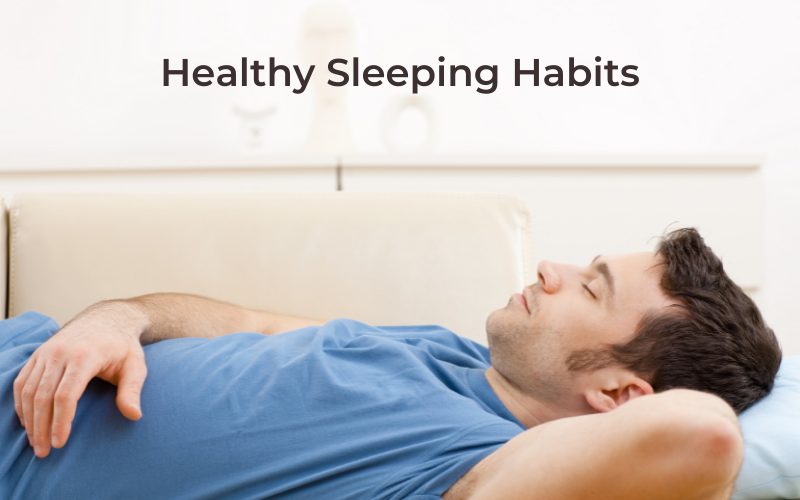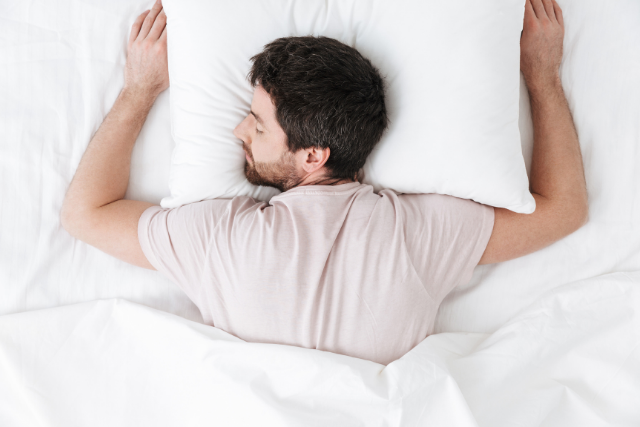Why Your Sleeping Position Matters: The Best and Worst Sleeping Positions

Sleep is a huge part of our life. To be precise, about one-third of our lives is spent sleeping. That is if you are getting enough of it. From further away, sleeping positions might seem like a trivial issue. Upon a closer look, however, one might find that sleeping positions matter a lot.
How our mornings go determines how our days go, and how our nights go decides how our morning will go. Waking up with pains in random places of your body can certainly be annoying. Therefore, to have a fresher mind and a fresher life, you might want to consider paying attention to your sleeping positions. This blog will discuss the most common positions people sleep in and which are more ideal than others.
Sleeping on your back


Many believe sleeping on your back is the best position to sleep in given that you do not have breathing problems. It is ideal for avoiding back pain, and many physiotherapists recommend that you place a pillow below your knees for optimal spinal alignment. It is also referred to as the supine position. Many variations of this sleeping position may include legs being spread out, arms to the side, hands bent across stomachs or chests, arms lifted over the shoulders, and so on. The main characteristic is resting on your back.
Even with the great reviews of the supine position, few people tend to sleep in this position, as little as 8 percent.
Benefits of sleeping on your back
Sleeping on your back can help you avoid neck and back problems. Lying flat on your back keeps your head, neck, and spine in a neutral position, alleviating pressure on the joints in those areas. Here are the main benefits of the supine position:
- Prevents muscular or joint pains
- Provides excellent support for the body
- Raises the feet above the heart, which prevents swelling feet and ankles
- Lowers risk of congestive heart failure
- It is the ideal sleeping posture for babies and reduces the danger of sudden infant death syndrome.
Drawbacks of sleeping on your back
While sleeping on the back might be good for your posture, it may not be optimal for people with breathing problems. Here are some of the drawbacks of sleeping on your back:
- May worsen conditions for people who have difficulty breathing
- Worsens sleep apnea (interruptions in breathing while sleeping or snoring) and increases the volume of snoring.
- The lower jaw and tongue tend to move back and restrict airway in this posture, especially with blockages in nose or mouth breathing
- Sleep apnea can cause many other health conditions including Nocturia, Heartburn, High BP, Diabetes, and even the Risk of Heart Failure
- Pregnant women should avoid this position because it may reduce blood flow to the baby
Sleeping on your sides
Side sleeping involves sleeping on the side with your legs straight. It has variations, one of which is the “fetal position” that we will discuss after this section. Side sleeping is also referred to as lateral sleeping and is one of the more common methods of sleeping. It does not contribute to sleep apnea, and people tend to switch sides while sleeping in this position. About 15 percent of people sleep regularly in this posture.


Benefits of sleeping on your sides
- It can reduce breathing problems that the supine position may cause
- It does not contribute to snoring
- It is suitable for couples
- It may be suitable for backache problems if you keep your spine upright and legs straight
- Most of the drawbacks of lateral sleeping can be fixed by appropriate pillow positions
Drawbacks of sleeping on your sides
Unfortunately, there seem to be many drawbacks that might come with sleeping on your sides:
- Lateral sleeping is not suitable for people with arthritis because it may put a lot of pressure on your hip bones or arms.
- It can contribute to wrinkling because one side of the body is pressed too hard to the sheets.
- Sleeping on your left side can make your lungs weigh down on the heart, due to gravity. This can add to heart problems.
- It has been associated with increasing kidney output, which can lead to frequent urination during the night.
Sleeping in the fetal position


Sleeping in the fetal position is the most favored sleep position if we speak statistically. Around 41% of people sleep in a position in which they curl up on their sides with their knees bent, like a fetus. It can be warm and comforting to sleep in this position for many. It is suggested that women favor these positions more than men. Either way, this posture has its own sets of pros and cons.
Benefits of sleeping in the fetal position
- It is a good sleeping option for pregnant people since it does not put pressure on the back and improves blood circulation to the baby. It further also prevents the uterus from pressing to the liver.
- Some animal research indicates that the fetal position can prevent brain diseases.
- It can be a good neutral position for the back.
- It does not cause the breathing problems supine positions may cause.
Drawbacks of sleeping in the fetal position
- This position involves curling up, which can ruin your back posture in the long run. It can modify the usual S shape of the spine into a C.
- It can hurt and put pressure on your hips. This drawback can however be neutralized by placing a pillow between your knees.
- This posture can promote an uneven distribution of weight around your body and torse. This can lead to body pains.
Sleeping on Your Stomach


Sleeping on the stomach involves lying on your tummy, facing your body towards the bed. It is also called the “prone” position and it is not favored much by sleep experts or even common people. Studies show that as little as 7 percent of people sleep in this position. It carries several health risks and is not usually recommended. Yet, the prone position has been a savior for many suffering from breathing difficulties. Further, many find warmth and comfort in sleeping this way. Let us discuss the pros and cons of sleeping on your stomach to understand better.
Benefits of sleeping on your stomach
- Sleeping on the stomach is ideal for people with breathing problems. It has proven to improve oxygen levels wonderfully within minutes.
- It is ideal for people suffering from sleep apnea.
- If you are sleeping on a hard surface, this position may come in handy to avoid putting pressure on your back.
Drawbacks of sleeping on your stomach
- It puts a lot of pressure on the spine because it is hard to find a neutral posture when sleeping on your tummy
- One has to turn their head to the side when sleeping in this position, which constantly causes neck pain.
- It can put pressure on the nerves, which causes numbing, tingling, and pain.
- It is found to be an uncomfortable position to hold in general. To neutralize the effects, it is recommended that one places a pillow below their tummy.
The main takeaway
How an individual chooses to sleep is ultimately on what makes them the most comfortable and what suits their needs or issues. There are pros and cons to all sleeping positions. Hence, there is no universal “right” or “wrong” way to sleep. Different people suffer from different issues and finding the ideal sleep position is something one must figure out accordingly. We hope this blog gives you enough information about various sleeping positions and helps you choose the right fit for you!









